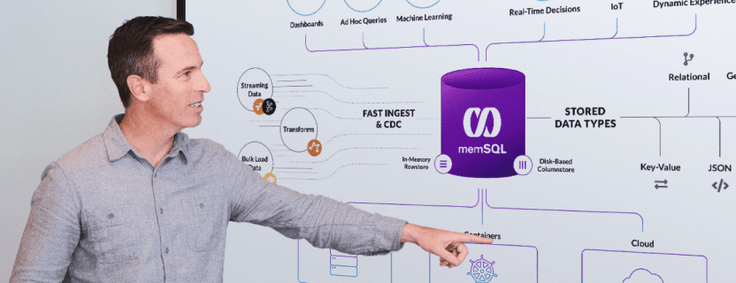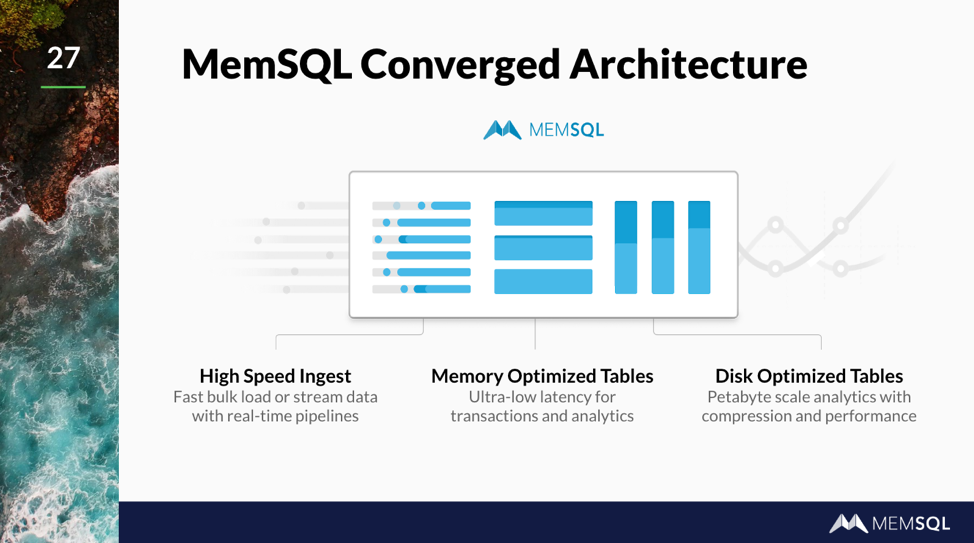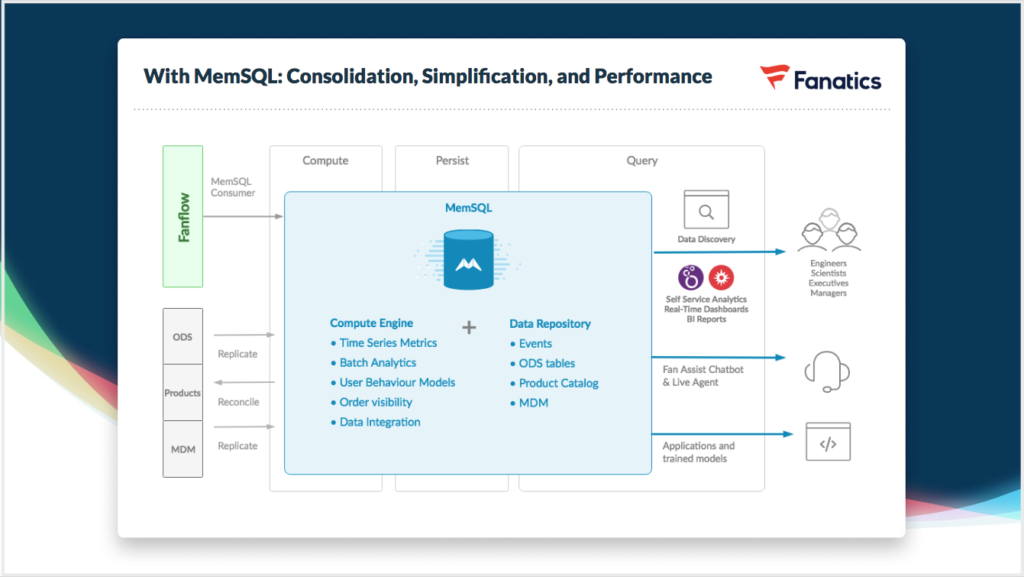
If you’ve wondered what makes SingleStore different, how it fits in the database landscape, and why customers are saying great things about it, our updated webinar should help.
In the webinar, Mike Boyarski, senior director of product marketing at SingleStore, and an industry veteran, describes the high points of SingleStore’s evolution and how it’s helping customers today.

The Limitations of Current Databases
Today, organizations leverage data for competitive advantage. In a Harvard Business Review study (PDF), organizations that use “data-driven decisions were, on average, 5% more productive and 6% more profitable than their competitors.”
Both important and routine decisions are made and implemented on the fly. To quote a recent Capgemini study, “77% of respondents agreed that decision-makers increasingly require data in real-time.”
How do current databases try to meet these needs – and where do they fall short? Here are a few trends, and their impact:
- Data democratization. As more businesspeople require the most up-to-date data for data-driven decisions, they encounter database scale limits, which result in throttled access to data, and cached (stale) views on data. These inefficiencies put organizations behind more nimble competitors, limiting growth.
- Performance degradation. The need for 24/7 data collection and monitoring can generate very large tables, resulting in slow-performing queries. A common trade-off is to break up the data into separate silos, or batch (that is, delay) the data into low-cost data lakes – which require expert tuning and more caching. This leads to customer complaints about query delays, inaccurate results that can ultimately cause customer attrition, and increased costs for performance workarounds.
- Expensive upgrades. Established database architectures were never designed to scale to today’s data requirements, and indeed, they don’t scale well. The companies that control these aging solutions charge high prices for add-ons, maintenance contracts, and upgrades that only address part of the performance problems. Customers face decreasing flexibility, reduced competitiveness, and increasing costs.
Common Solutions to Today’s Problems
There are three commonly tried solutions for getting the needed results from current database infrastructure:
- Double down on the existing database. Customers can throw hardware at the problem and/or pay for pricey upgrades and add-ons to database software. Often, the result is an incremental improvement in performance, or merely keeping pace with increased data collection and increasing user demands, all at the expense of higher costs and greater complexity.
- Add specialized caching tiers. One common hardware/software solution is the use of specialized caching tiers. However, these tiers duplicate slowly, can potentially experience data loss in unexpected outages, and are also limited in their SQL coverage.
- Store objects in NoSQL solutions. Semi-structured data can be saved somewhat more quickly in a NoSQL object store. But this kind of data can break business intelligence tools and requires developer work to construct custom queries, which then run slowly.
SingleStore Introduced as an In-Memory and Real-Time Database
SingleStore offers a converged architecture with the high-speed ingest performance traditionally found only with NoSQL, tables optimized as needed for memory and disk performance, and a very widely used, industry-standard SQL interface.
SingleStore offers five attributes not usually found in a single offering:
- Extreme performance
- Massive scalability
- An easy-to-use SQL architecture
- Cloud-native, able to run on any cloud infrastructure or commodity hardware
- Reasonable price, with strong price-performance
For a wide range of applicable use cases, SingleStore runs ten times faster, and at one-third the cost of legacy database providers.

SingleStore was originally introduced as an in-memory database that, unusually, can scale across multiple servers while maintaining ACID compliance, and that offers real-time analytics response. Now, SingleStore is highly flexible, with rowstore usually implemented fully in-memory and columnstore running with a combination of in-memory and disk storage. This gives users a wide range of options for price and performance flexibility.
Where SingleStore is Making a Difference
SingleStore is making a difference for a variety of use cases across a wide range of customers.
The initial customer use case is usually a high-leverage implementation that fixes an important business problem that no other database can. For instance, SingleStore is often used as the database for a real-time dashboard with high volumes of “live” data to ingest and a high number of concurrent queries, including automated queries and those generated directly by users.
However, once a customer has SingleStore up and running, they typically come to see SingleStore as a high-performance, reasonably-priced, general-use database; SingleStore then gets implemented broadly across an organization.
SingleStore customer use cases include:
- Financial services. Solutions for banks, insurance companies, and other financial services companies include real-time decision-making, risk management, and fraud detection.
- Media and communications companies. Ad analytics help media companies show the right ad to the right customer in real time. SingleStore is also frequently used for content personalization and streaming media analytics.
- And more. SingleStore powers real-time dashboards, IoT analytics, and database modernization projects.

As the leading vendor of licensed sports merchandise, Fanatics needs to compete at the highest level of e-commerce. Fanatics created an analytics implementation that takes full advantage of SingleStore’s capabilities.
Fanatics put SingleStore at the core of its analytics architecture. The resulting solution is responsive, easy to manage and maintain, and supports queries from business analytics tools, custom reports, and ad hoc access, all using an industry-standard SQL interface.
Webinar Recording and Slides
You can easily access the webinar recording and slides to learn more about SingleStore.
Free Trial
You can now use SingleStore for free. Try SingleStore today!











